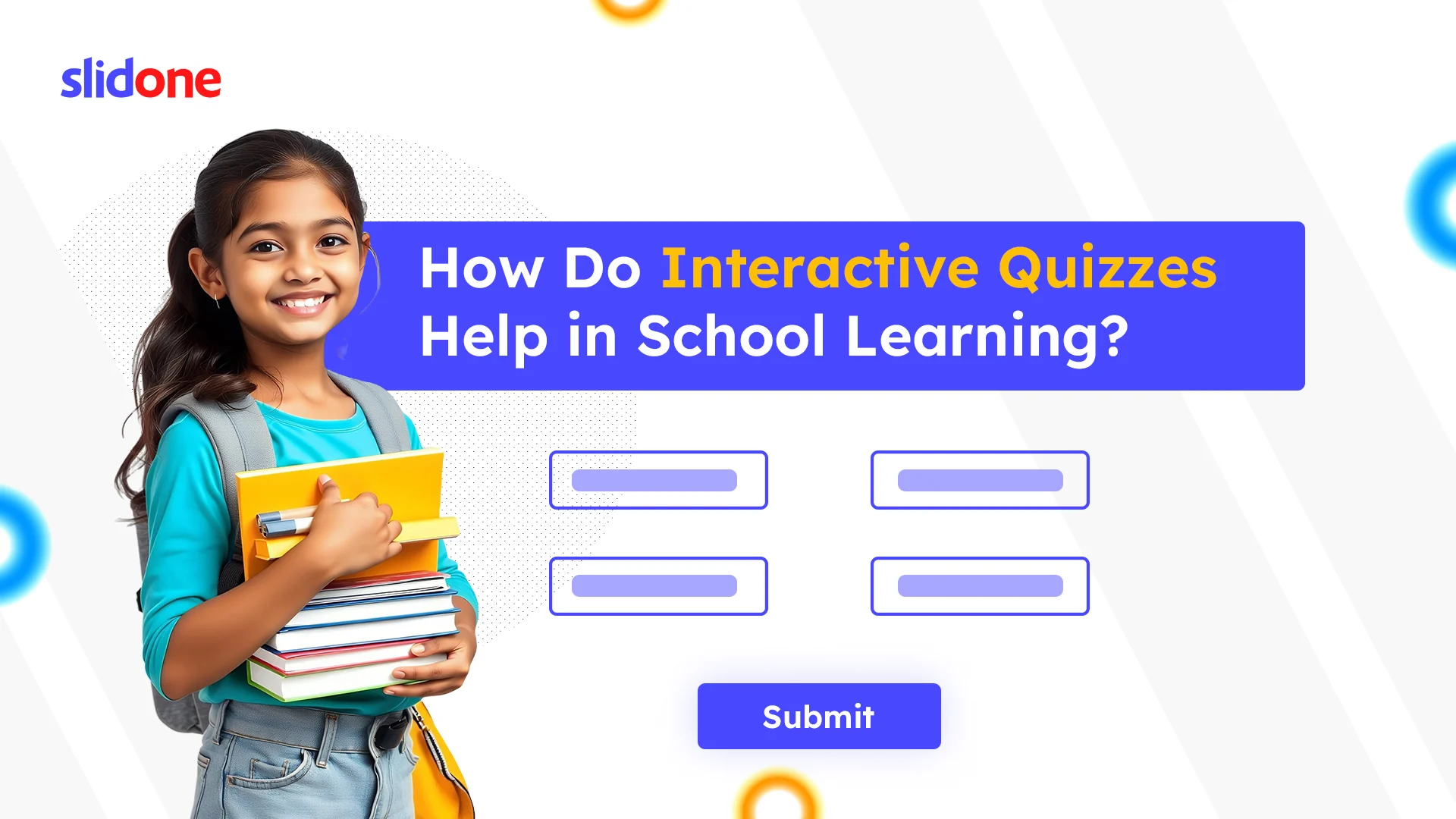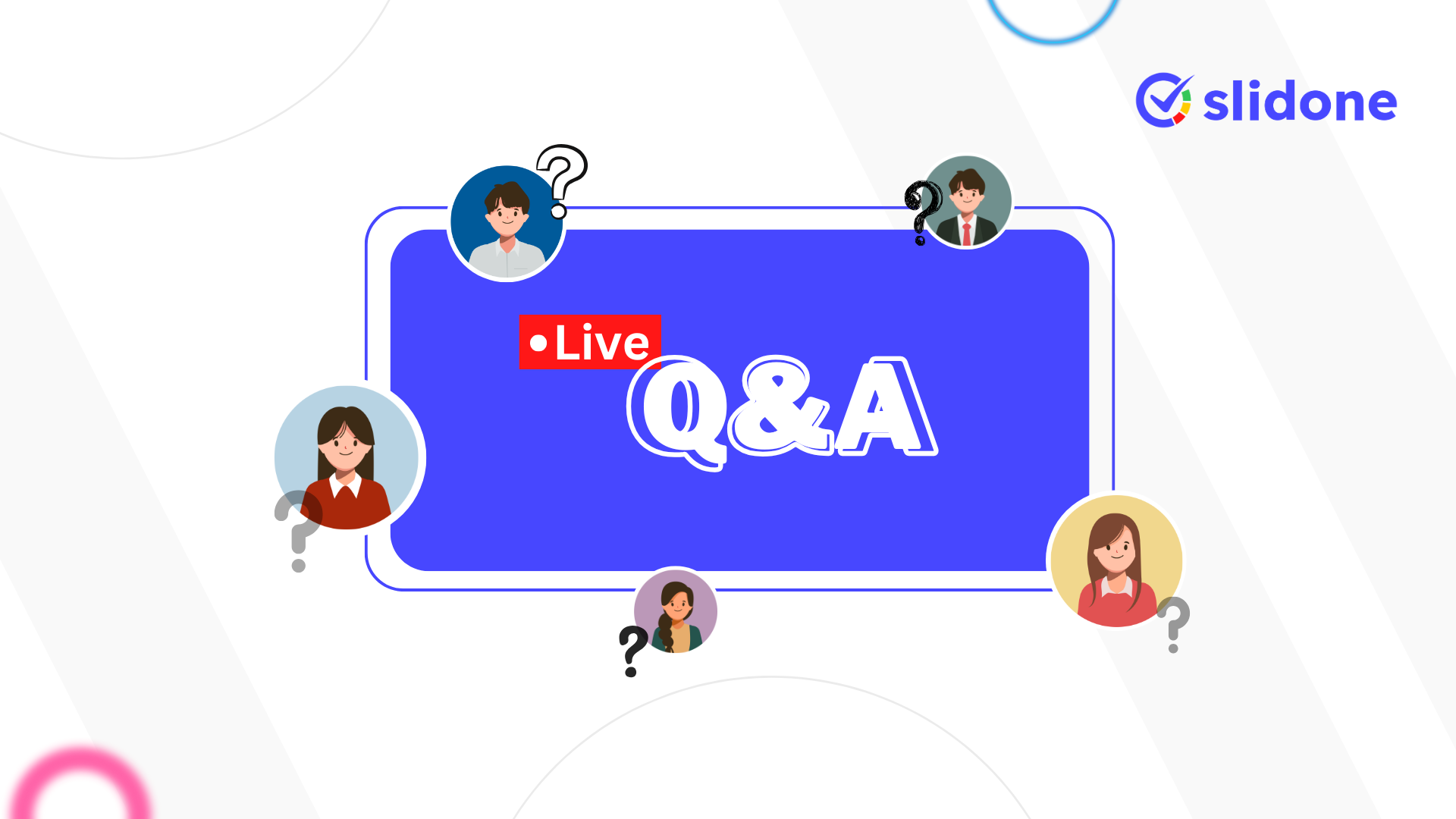Interactive quizzes have become a valuable tool in modern education. Unlike traditional assessment methods, interactive quizzes use technology to create an engaging, dynamic, and effective learning experience for students. From elementary classrooms to university lectures, teachers are increasingly incorporating interactive quizzes and answers into their lessons to increase student engagement, improve student retention and make learning fun. In this blog, we explore how interactive questions support school learning, the benefits they bring to the classroom, and practical ways teachers can enhance student performance.
What Are Interactive Quizzes?
Interactive quizzes are a form of digital exploration to engage students actively and in an engaging and active way with the materials. Unlike traditional paper-based tests, interactive quizzes typically incorporate multimedia elements such as images, video, and audio text. It can be accessed through online platforms and learning management systems such as slides, which allow teachers to create custom quizzes tailored to their lessons.
Interactive quizzes are usually self-paced, giving students the freedom to complete them at their own pace in class or at home. This flexibility is especially helpful for adapting to different learning styles and needs. These questions can also provide immediate feedback, allowing students to learn from their mistakes immediately.
Why are Interactive Quizzes important in education?
Interactive quizzes aren’t just a way to test students’ knowledge—they’re a powerful teaching tool that supports active learning, critical thinking, and memory retention. Here’s why it’s important in education:
Engaging students in the learning process: Interactive quizzes make learning fun and interesting. They disrupt the monotony of traditional lectures and keep students focused on the material. For example, quizzes with colorful graphics and interactive elements can turn a history lesson into an exciting journey through time. This helps keep students interested in the topic, and keeps them more engaged and focused during the course.
Encouraging active learning: Active learning means that students are engaged in their learning rather than receiving information passively. Interactive quizzes require students to think critically, problem solve, and make decisions, all of which are critical skills for academic success. By answering questions and receiving information immediately, students become active participants in their learning process.
Take Instant Feedback: One of the most important advantages of interactive Q&A is the ability to provide instant feedback. With traditional tests, students often have to wait for their teacher to grade their paper, which can take days or even weeks. Using interactive quizzes , students can see the results immediately, allowing them to understand and correct their mistakes on the spot. This instant feedback reinforces learning and helps students improve their performance faster.
Promoting self-directed learning: Interactive quizzes empower students to take control of their own learning. With online quizzes available, students can review courses and practice skills outside of the classroom. This encourages them to learn at their own pace, and they see areas where they need to practice more. Self-directed learning is an important skill that helps students build confidence and develop a lifelong love of learning.
Embracing different learning styles: Every student has a unique way of learning. Some students are visual learners, while others can learn more through auditory or kinesthetic methods. Interactive quizzes often have a variety of questions—such as multiple-choice, drag-and-drop, and matching—that appeal to different learning styles. This flexibility ensures that all students can work with the information in a way that it will work well for them.
How to Create Interactive Quizzes?
Creating interactive quizzes doesn’t have to be complicated. With tools like Slidone, you can create quizzes that are fun, easy to use, and tailored to student needs. Here is a step by step guide on how to create interactive questions.
Choose the Right Platform: Start by choosing the interactive presentation tools that suit your needs. Slidone is a great way to create quizzes because it’s easy to use and allows you to customize quizzes with different questions, images, and more
Deciding on a Learning Objective: Before you create your questions, think about what you want your students to learn. Are you reviewing a particular chapter, analyzing vocabulary, or checking for understanding of a concept? Defining your learning objectives will help you formulate appropriate and meaningful questions.
Include a variety of question types: Include a variety of questions such as multiple choice, true/false, and fill-in-the-blank to keep your question interesting. This variety helps cater for different learning styles and keeps students interested throughout the inquiry.
Include multimedia elements: Enhance your quiz by adding images, audio clips, or videos related to the questions. For example, if you are teaching geography, include maps to identify places for students. This makes the question more interactive and helps students connect with the information.
Provide Immediate Response: Make sure to structure your questions to give immediate feedback to the students. Know whether their answers are right or wrong and provide clarification if necessary. This helps students learn from their mistakes and understand the correct answer.
Review and test the questions: Before sharing the question with students, take some time to review it and test it yourself. Check for any errors or confusing questions and make sure the query runs smoothly.
Share with students: Once your quiz is ready, share it with your students via a link or code. Quizzes can be created on their devices, facilitating classroom and distance learning.
Benefits of Interactive Quizzes in the Classroom
Interactive quizzes offer many benefits that make them an effective tool for teachers and students alike. Here is an in-depth look at the benefits they bring to the classroom.
1. Increases motivation and engagement:
Students tend to join courses when they find them interesting and engaging. Interactive quizzes add some fun to the learning process, making it more like a game than an exam. When students are interested in questions, they are more motivated to participate, leading to greater concentration and better learning outcomes.
For example, a teacher can use interactive quizzes as a warm-up exercise at the beginning of a lesson to energize students and set the tone for the lesson. Not only does this engage students’ attention but it also creates the right attitude for learning.
2. Improves knowledge retention:
Studies have shown that students are more likely to remember information when they are actively engaged. Interactive quizzes encourage students to recall information, apply concepts, and think critically about content. This active memory process helps improve memory, making it easier for students to remember what they have learned.
By reviewing concepts through questions, students consolidate their understanding and better retain information over time. This makes communication questions particularly useful for things like words, mathematical structures, or historical facts.
3. Facilitates formal research:
Formative assessment is an ongoing process that helps teachers monitor student progress and adjust their instructional strategies to meet their needs. Interactive quizzes are an excellent form of formative assessment, as they provide teachers with real-time feedback on student performance.
Teachers can use the results of interactive questions to identify areas where students are struggling and provide targeted intervention. For example, if a question shows that many students are having trouble with a particular math concept, the teacher can spend more time reviewing that topic before moving on.
4. Promotes collaborative learning:
Interactive quizzes can also be used to encourage collaborative learning among students. Teachers can plan quizzes where students can work in pairs or small groups to discuss and answer questions. This fosters teamwork and helps students learn from each other.
Collaborative Q&As can also foster a sense of community in the classroom. When students work together to achieve a common goal, it creates a positive and supportive learning environment where they feel comfortable sharing their ideas.
5. Saves teacher’s time:
Creating and grading traditional tests can be time-consuming for teachers. Interactive quizzes, on the other hand, are easily conducted using online tools such as Slidone, and are independent of grades. This allows teachers to focus on instruction and spend more time providing individualized support to students.
Additionally, interactive quizzes often have embedded assessments that show teachers how students performed on each question, making it easier to spot trends and adjust curriculum accordingly.
How to effectively use interactive quizzes in the classroom?
Now that we understand the benefits of interactive quizzes , let’s explore some practical ways to use them in the classroom:
1. Warm Up Activities:
Begin each lesson with quick quizzes that review concepts from the previous lesson. This helps students remember what they have learned and prepares them for new information. It’s also a great way to get students focused and ready to learn.
2. Exit tickets:
Use interactive quizzes as an exit ticket at the end of the lesson. Ask a few questions that cover the main points of the lesson to see what students understand. This provides immediate feedback for both teacher and student, and helps identify areas that may need further revision.
3. Homework Guidelines:
Assign communication questions as homework to reinforce what has been taught in class. This allows students to practice the material at home and helps teachers monitor their progress. Because the quiz is interactive, it feels less like traditional homework and more like a fun activity.
4. Research Conference:
Use interactive questions to review key concepts with the class before the big test. This helps students refresh their memory and become more confident about the material. Teachers can develop cross-topic questions to ensure all areas have been thoroughly reviewed.
5. Group Competition:
Set up group competitions with interactive quizzes to make learning more fun. For example, divide the class into groups and have them compete to see who can answer the most questions correctly. This adds a competitive friendly atmosphere that motivates students to do their best.
Real-Life Examples of Interactive Quizzes in Action
Here are a few real-life examples to illustrate how interactive questions can transform school learning.
Example 1:
Language Teaching: A teacher in a Spanish classroom uses interactive quizzes and answers to help students use their vocabulary. The questions and answers include pictures and audio clips of native speakers pronouncing words. Students love the interactive process and easily remember new words as they hear and see them together.
Example 2:
Math lesson: The math teacher uses interactive quizzes and answers to teach fractions. The questions include visual classifications such as pie charts, and students are asked to drag and drop the appropriate unique characters. This helps students grasp concepts faster than just reading from a textbook.
Example 3:
Science Review: In a middle school science class, students use interactive quizzes to review parts of the bracket. The questions include pictures of plant cells and animal cells, and students have to label each category. The visual and interactive nature of the quiz helps students retain information better.
Conclusion: How communication questions change learning?
Interactive quizzes are more than just a research tool—they’re a way to create an engaging, interesting, and effective learning experience. By making questions interactive, teachers can help students stay engaged, retain information better, and develop a love of learning. Whether you’re a teacher looking to fill in your classroom assignments or a parent looking for ways to support a child’s learning, interactive quizzes offer a wealth of possibilities
With platforms like Slidone, you can easily create interactive quizzes, which allow you to focus on what really matters—helping students succeed. So, why not try interactive questions? They may just be the key to making learning fun for your students.
Happy teaching!





Leave a Comment
Your email address will not be published. Required fields are marked *